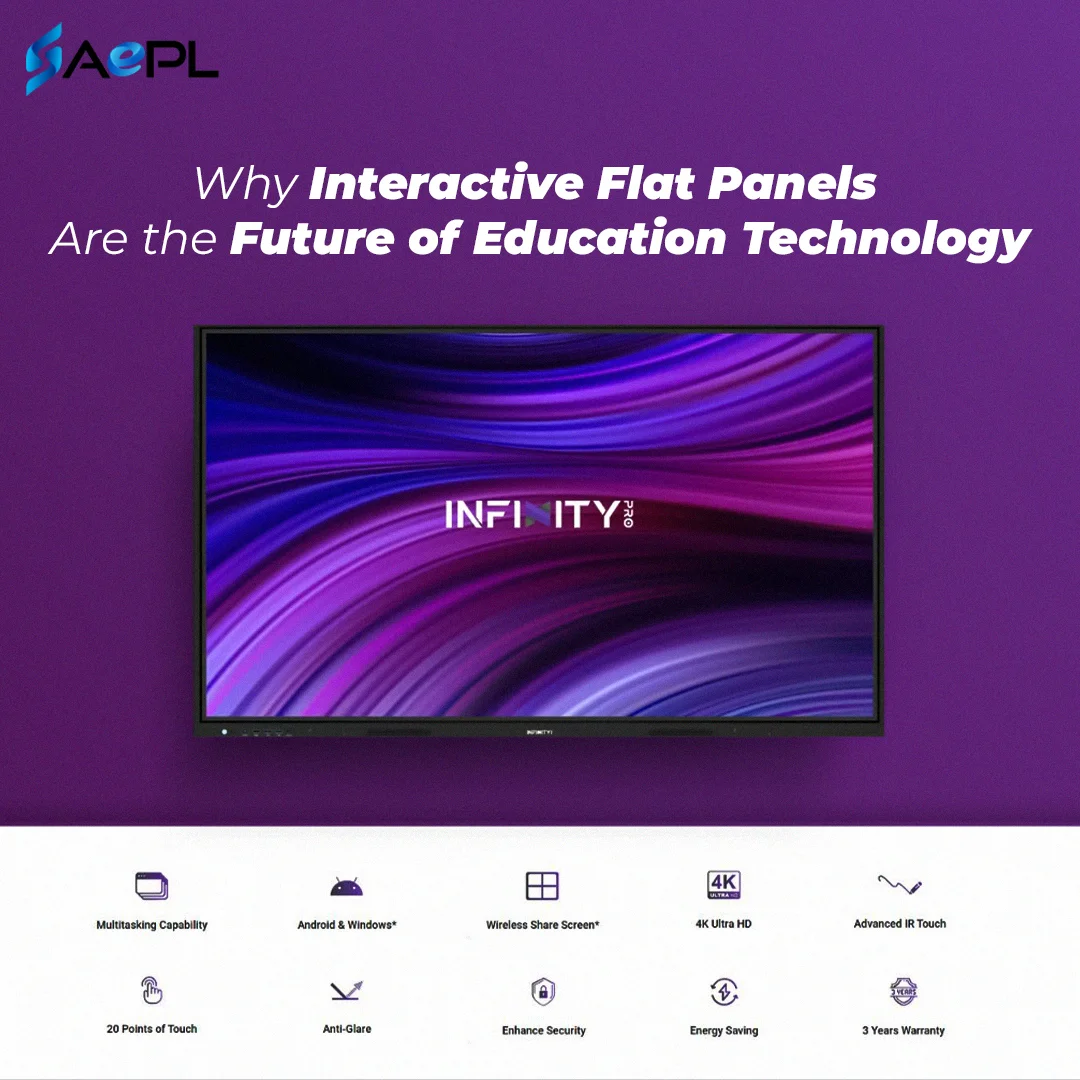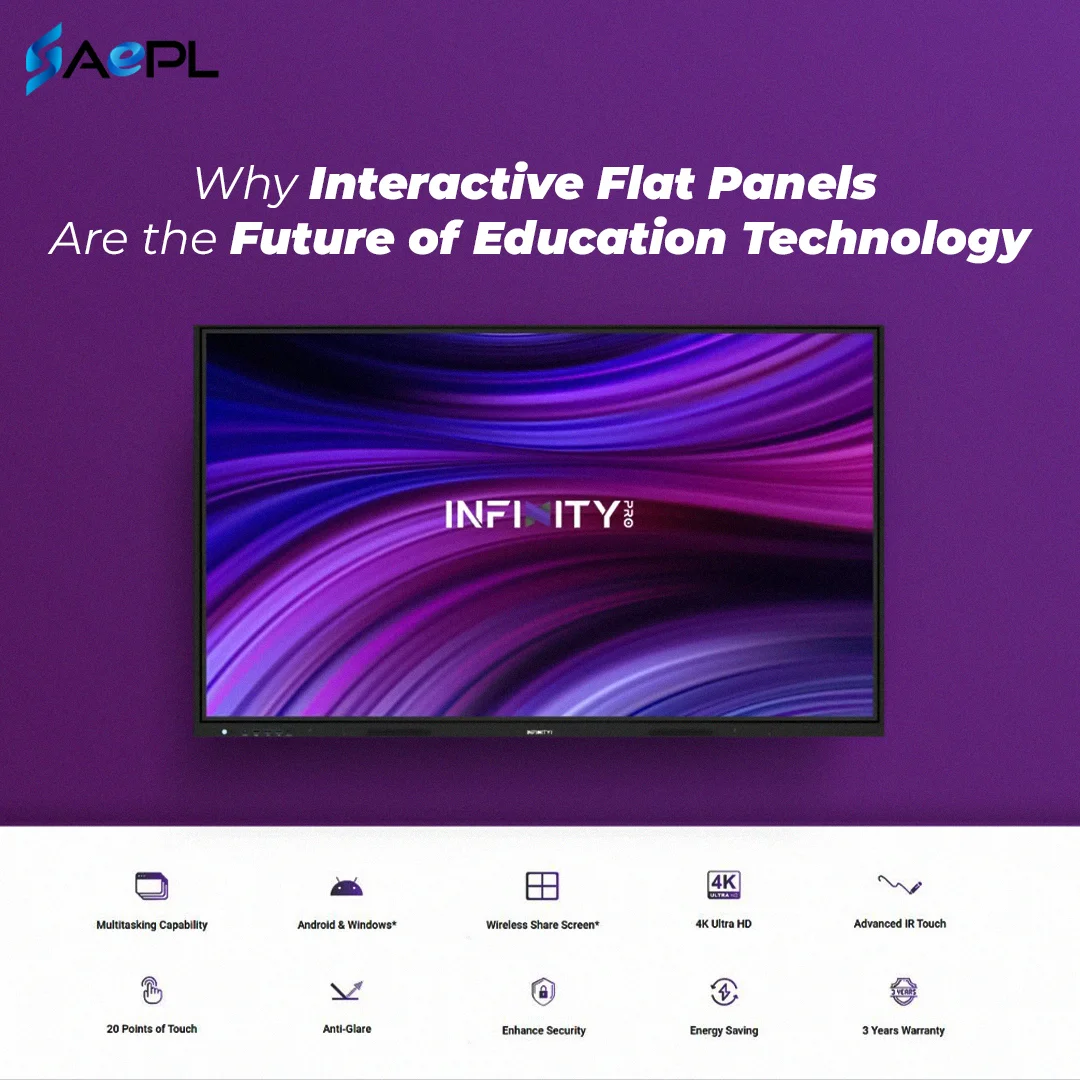Why Interactive Flat Panels Are the Future of Education Technology
The education landscape is undergoing a profound transformation, driven by the integration of cutting-edge technologies. Among these, interactive flat panels (IFPs) stand out as a game-changer, poised to redefine teaching and learning experiences. Here’s why interactive flat panels are heralded as the future of education technology.
Enhancing Student Engagement
Interactive flat panels offer a dynamic and engaging way to present educational content. Unlike traditional whiteboards or projectors, IFPs combine high-resolution touch screens with interactive software, allowing teachers to create immersive lessons. With screen sizes ranging from 55 inches, 65 inches, 75 inches, 86 inches to 110 inches and a resolution of 3840 x 2160, these panels provide crystal-clear visuals that captivate students. Students can interact directly with the content, making learning more participatory and engaging. This interactive element not only captures students' attention but also encourages active involvement, leading to better retention and understanding of the material.
Facilitating Collaborative Learning
One of the standout features of interactive display is their ability to facilitate collaborative learning. These panels often support multi-touch capabilities, enabling multiple students to work on the screen simultaneously. This fosters a collaborative environment where students can share ideas, solve problems together, and learn from each other. Such collaboration is essential in developing critical thinking and teamwork skills, which are crucial for success in the modern world.
Integrating with Digital Tools
Interactive flat panels seamlessly integrate with a wide array of digital tools and educational software. Teachers can access online resources, educational apps, and multimedia content directly from the panel, enriching their lessons with diverse materials. This integration supports differentiated instruction, allowing educators to cater to the varied learning needs and paces of their students. Whether it's accessing a library of educational videos, conducting virtual field trips, or utilizing interactive simulations, IFPs provide endless possibilities for enriching the curriculum.
Simplifying Classroom Management
Classroom management becomes more efficient with Interactive White Boards. These devices often come with built-in classroom management software that helps teachers organize their lessons, track student progress, and manage administrative tasks. For instance, teachers can easily distribute assignments, collect responses, and provide instant feedback, streamlining the entire teaching process. This efficiency frees up more time for personalized instruction and student interaction.
Supporting Remote and Hybrid Learning
In the wake of the COVID-19 pandemic, the importance of remote and hybrid learning has become more apparent. Interactive flat panels are well-suited for these new modes of education. They enable seamless connectivity with various video conferencing tools, allowing teachers to conduct interactive online classes. Features like screen sharing, digital whiteboarding, and real-time collaboration ensure that remote learners receive an engaging and interactive education experience akin to in-person learning.
Durability and Cost-Effectiveness
While the initial investment in interactive flat panels may seem significant, they prove to be cost-effective in the long run. IFPs are durable and require less maintenance compared to traditional projectors and whiteboards. Moreover, the ability to access a wealth of digital resources reduces the need for physical textbooks and other materials, resulting in long-term savings for educational institutions.
Preparing Students for the Future
Finally, interactive flat panels prepare students for the future by familiarizing them with the technology they will encounter in higher education and the workplace. Proficiency with digital tools, interactive software, and collaborative technologies are essential skills in the 21st century. By integrating IFPs into the classroom, educators are equipping students with the competencies they need to thrive in a technology-driven world.
In conclusion, interactive flat panels are not just a trend but a transformative force in education technology. They enhance student engagement, facilitate collaboration, integrate seamlessly with digital tools, simplify classroom management, support remote learning, and prepare students for the future. As education continues to evolve, interactive flat panels will undoubtedly play a pivotal role in shaping the future of teaching and learning.
Contact Acsure Exim Pvt Ltd for more details at +91-9600189287 or mail us at gaurav@acsureindia.com



